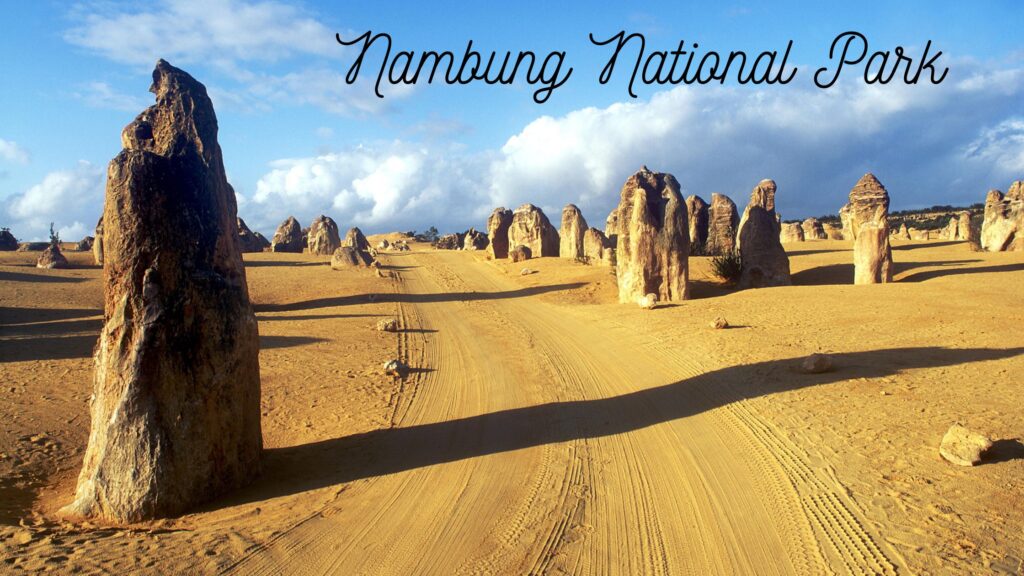
In the heart of Western Australia lies an otherworldly landscape that defies expectation and captivates the imagination—the Pinnacles Desert within Nambung National Park. Spanning over 17,000 hectares along the Coral Coast, this natural wonderland is a testament to the breathtaking diversity and surreal beauty of the Australian landscape.
A Geological Marvel: The Pinnacles
The pinnacles Western Australia stand as a testament to millions of years of geological evolution. These limestone formations, rising like ancient sentinels from the sandy desert floor, create an ethereal, almost alien, landscape. Formed from ancient seashells that were broken down into limestone sand over centuries, these towering spires have been sculpted by the forces of wind, rain, and time itself.
Some Pinnacles stand only a few metres tall, while others soar upward, reaching heights of several metres, resembling petrified trees or an eerie stone forest frozen in time. Their shapes vary from slender and sharp to bulbous and rounded, each one a unique creation shaped by nature’s artistic hand.
The Mystique of the Desert
Visiting the pinnacles Western Australia is not just a journey through a geological wonder but an immersion into an environment steeped in mystique and ancient allure. The silence of the desert, broken only by the occasional whisper of the wind, adds to the surreal atmosphere. As the sun traverses the sky, it casts ever-changing shadows that dance across the rocky landscape, creating a mesmerising play of light and shadow.
The best time to visit these formations is often during sunrise or sunset when the golden hues of the sun bathe the Pinnacles in a warm, enchanting glow. The shifting light accentuates the textures and contours of the limestone structures, painting a canvas of vibrant colours against the vast expanse of the desert backdrop.
Exploring the Pinnacles in Western Australia
Exploring the Pinnacles in Western Australia unveils a surreal adventure amid a landscape that feels plucked from a distant world. As you step into Nambung National Park, anticipation heightens, greeted by a vista unlike any other. The Pinnacles Desert sprawls before you, an enigmatic mosaic of limestone spires rising from golden sands.
Walking among these ancient sentinels feels akin to traversing a natural art gallery. Each pinnacle boasts a unique shape and size, some slender and jagged, others bulbous and weathered. The stillness of the desert punctuated by the occasional rustle of winds, adds an eerie yet captivating ambiance to the experience.
The best moments arrive during the golden hours—sunrise and sunset—when the sun’s rays cast a warm, ethereal glow upon the Pinnacles. The interplay of light and shadow unveils a mesmerising spectacle, transforming the landscape into a canvas of vibrant hues.
Whether strolling along the pathways weaving between these limestone structures or driving along the designated trails, the Pinnacles never fail to astound. The sheer scale and diversity of these formations create a surreal environment that sparks the imagination and invites contemplation of the forces that shaped them over millennia.
Amid this seemingly desolate landscape, the resilience of life manifests in surprising ways. Hardy plants peek through the sands, and wildlife adapted to the harsh conditions thrive, offering glimpses of nature’s tenacity.
As you absorb the breathtaking views, it becomes evident that the Pinnacles are not merely geological wonders but cultural treasures. They hold spiritual significance for the indigenous custodians of the land, adding layers of depth and reverence to this natural spectacle.
In essence, exploring the pinnacles Western Australia is an immersive journey—an encounter with a geological marvel, an exploration of cultural heritage, and a communion with the raw beauty of nature that leaves an indelible mark on the soul.
The Ecological Oasis
Despite the seemingly harsh environment, the Nambung National Park and its Pinnacles support a surprising array of flora and fauna. Hardy plants such as banksias, hakeas, and various wildflowers dot the landscape, their vibrant colours providing a stark yet beautiful contrast to the neutral tones of the desert.
Wildlife, adapted to the arid conditions, can be spotted throughout the park. From agile lizards darting among the rocks to kangaroos grazing in the distance, the park’s ecosystem teems with life, showcasing nature’s resilience in even the most unforgiving habitats.
Cultural and Historical Significance
The Pinnacles hold a special place in the cultural heritage of the indigenous peoples of Australia. For the Nyoongar people, who are the traditional custodians of this land, these formations are imbued with stories and spiritual significance, representing a connection to their ancestral lands and the Dreamtime—their creation stories and spiritual beliefs.
Respecting the cultural significance of the Pinnacles is integral when visiting this site. Interpretive centres and guided tours offer insights into the indigenous heritage of the area, allowing visitors to appreciate not just the geological marvels but also the rich cultural tapestry woven into the fabric of the land.
Preservation and Conservation Efforts
Preserving the delicate balance of the Nambung National Park is a priority. Measures to protect the fragile ecosystem, including restricted access to certain areas and guidelines for visitors, are in place to ensure the continued existence of this natural wonder for generations to come. Educational programs and initiatives promote awareness about conservation, encouraging responsible tourism practices among visitors.
Conclusion
The Pinnacles of Western Australia’s Nambung National Park stand as a testament to the awe-inspiring power of nature’s artistry. This geological masterpiece, shaped by time and the elements, offers a glimpse into the magnificence of our planet’s natural wonders. Beyond their sheer geological beauty, the Pinnacles serve as a reminder of the intricate relationship between culture, history, and the environment—a landscape to be treasured and preserved for its beauty, significance, and the stories it holds.